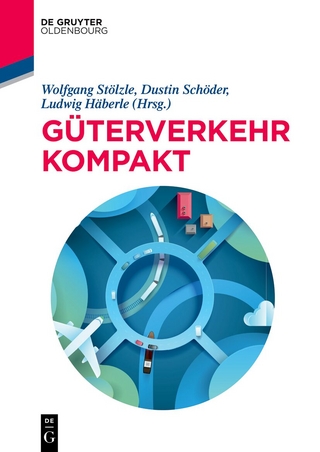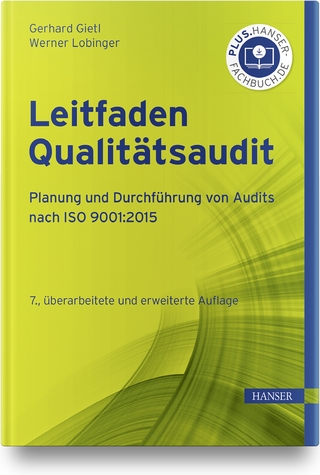
The Smart, Digital Supply Chain of Tomorrow is Here Today
Productivity Press (Verlag)
978-1-032-44534-2 (ISBN)
- Noch nicht erschienen (ca. Januar 2025)
- Versandkostenfrei innerhalb Deutschlands
- Auch auf Rechnung
- Verfügbarkeit in der Filiale vor Ort prüfen
- Artikel merken
Technology plays a key role in enabling Lean and Agile Supply Chain operations. For example, connecting to suppliers in real-time facilitates re-supplying parts and materials for a just-in-time production environment. But choosing the wrong technology can create waste in terms of the time, effort, and money spent evaluating, selecting, implementing, and using it.
Furthermore, Lean has been traditionally thought of as a "pen and pencil" technique as they were mostly confined to a single facility. As a consequence, while there are many books written on Lean Manufacturing, Lean Office and to a lesser degree, Lean Global Supply Chain, most if not all barely discuss the role and impact of technology in process improvement, and there aren’t many books that combine the topics of a Lean and Agile Supply Chain and Technology (Smart and otherwise) in this way.
This book makes the case that technology is a key enabler of a Lean Supply Chain and is unique in that it links Lean and Agile thinking with available and affordable technologies to get the most out of improved processes.
Essentially, this book details various Supply Chain and Logistics Management areas where Lean and Agile thinking in combination with existing and emerging technologies such as the Internet, e-commerce, Enterprise Resource Planning (ERP) systems, Robotics, IoT, AI, Data Analytics, etc., can take an organization to the next level through increased speed, accuracy, integration, and collaboration among all parties in the Supply Chain.
Paul Myerson has been a full time Instructor of Management at Monmouth University from 2017-2021. He holds a B.S. in Business Logistics from Pennsylvania State University and an MBA in Physical Distribution from Temple University. Professor Myerson has an extensive background as a supply chain and logistics professional, consultant, and teacher (most recently at Lehigh University full time from 2013-2017, and New Jersey City University and Kean University as an Adjunct prior to that). Prior to joining the faculty full time at Lehigh (and then Monmouth) University, Professor Myerson has been a successful change catalyst for a variety of clients and organizations of all sizes. His 30+ years of experience in Supply Chain Management, Logistics Strategies, and Operations Systems have resulted in bottom-line improvements for companies such as General Electric (GE), Unilever, and Church & Dwight (Arm & Hammer). Professor Myerson created and has marketed a Supply Chain Planning software tool for Windows to a variety of companies worldwide since 1998 and also writes a column on Lean Supply Chain for Inbound Logistics Magazine and formerly wrote a blog for Industry Week magazine. Professor Myerson is the author of six books on the topic of Supply Chain Management and has contributed chapters to two other books (one of which won the Shingo Research Award in 2017).
Part I: Introduction Chapter 1 – Supply Chain and Technology: A Smart Combination Chapter 2 – The Supply Chain and its Growing Importance to Business and Society Chapter 3 – The Smart, Digital Supply Chain Chapter 4 – Lean and Agile Concepts and their Applications in the Supply Chain Chapter 5 – The Software and Hardware Sourcing Process Part II: Supply Chain Software Systems Chapter 6 – Supply Chain Software: Plan Chapter 7 – Supply Chain Software: Source Chapter 8 – Supply Chain Software: Make Chapter 9 – Supply Chain Software: Deliver Chapter 10 – Supply Chain Software: Return Part III: Supply Chain Equipment Chapter 11 – Supply Chain Equipment: Distribution Centers and Warehousing Chapter 12 – Supply Chain Equipment: Transportation Part IV: Integration of Technology Chapter 13 – Integration and Collaboration Chapter 14 – Internet of Things (IoT) and Real Time Visibility Part V: Supply Chain Analytics, Decision Support Systems and other Leading Edge Technologies Chapter 15 –Decision Support Systems and Supply Chain Analytics Chapter 16 – Artificial Intelligence (AI), Machine Learning, Blockchain and Robotics Part VI: The Smart(er), Living Supply Chain that is Yet to Come Chapter 17 – Emerging Technologies and their Impact on the Extended Supply Chain in the Coming Years References
| Erscheint lt. Verlag | 30.1.2025 |
|---|---|
| Zusatzinfo | 58 Line drawings, black and white; 58 Illustrations, black and white |
| Verlagsort | London |
| Sprache | englisch |
| Maße | 178 x 254 mm |
| Themenwelt | Technik ► Umwelttechnik / Biotechnologie |
| Wirtschaft ► Betriebswirtschaft / Management ► Logistik / Produktion | |
| Wirtschaft ► Volkswirtschaftslehre | |
| ISBN-10 | 1-032-44534-3 / 1032445343 |
| ISBN-13 | 978-1-032-44534-2 / 9781032445342 |
| Zustand | Neuware |
| Haben Sie eine Frage zum Produkt? |
aus dem Bereich


